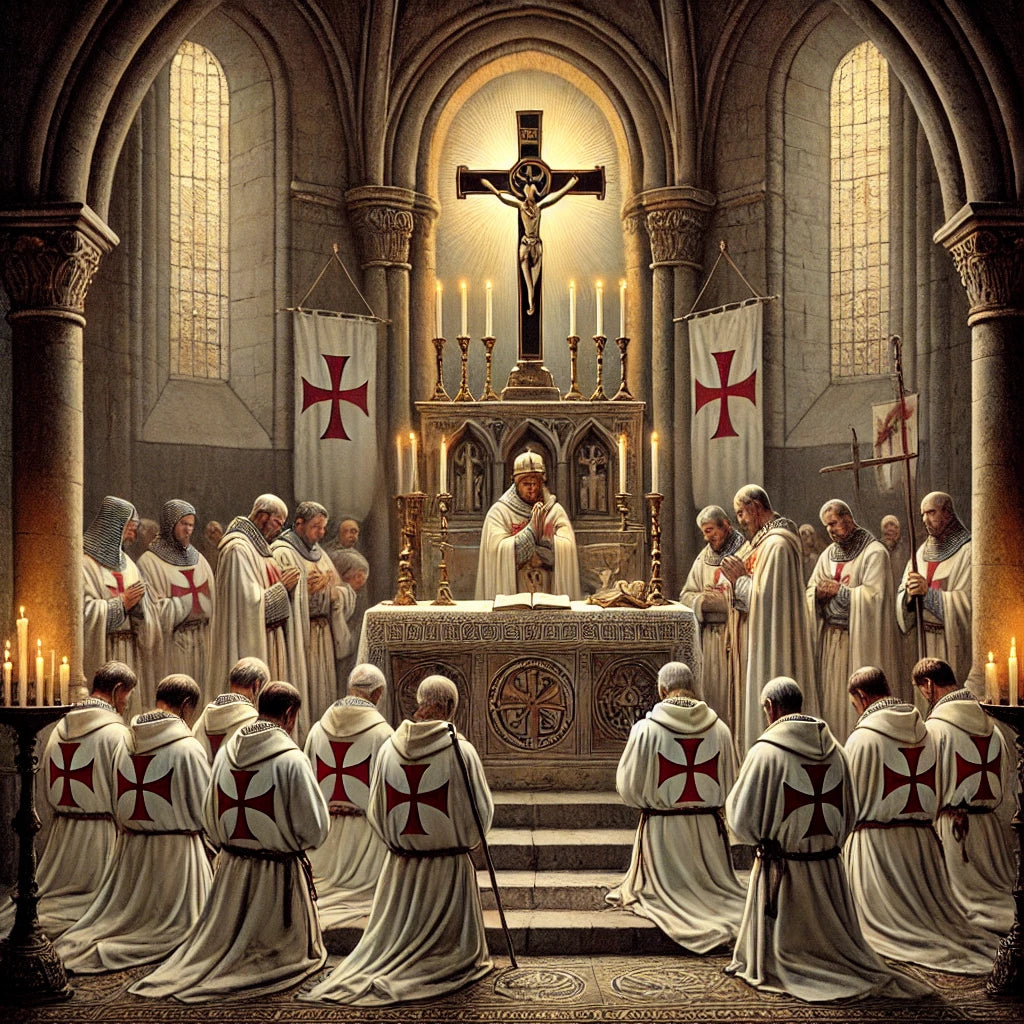Knights Templar and Commerce: The Birth of Modern Banking
From Sword to Ledger: How the Knights Templar Pioneered Modern Banking
The Knights Templar, often revered for their military might and unwavering religious devotion, are less commonly recognized for their profound influence on the development of medieval commerce and the foundations of modern banking. However, their contributions in this area were just as significant as their martial achievements, if not more so. The Templars' innovative approach to finance and their establishment of a vast network of financial operations laid the groundwork for many of the banking practices that continue to shape our world today.
The Origins of the Templars' Financial Power
The Knights Templar were founded in the early 12th century with a clear mission: to protect Christian pilgrims traveling to the Holy Land. As their influence and resources grew, so did their need for a reliable and secure method of managing money, particularly given the dangers of long-distance travel during the medieval period. To address these challenges, the Templars began to develop a system of financial operations that would eventually make them one of the most powerful economic forces in Europe.
One of the key innovations introduced by the Templars was their early adoption of a form of credit. Pilgrims or nobles could deposit funds at one of the Templar strongholds in Europe, receive a letter of credit, and then withdraw the equivalent amount upon reaching their destination in the Holy Land. This not only provided travelers with security but also allowed the Templars to control and monitor large sums of money across vast distances.

The Establishment of a Financial Network
The Templars’ network of strongholds spread across Europe and the Middle East, including key cities such as Paris, London, and Jerusalem. These fortresses served as more than just military bases; they became financial hubs where money, goods, and information could be stored and transferred safely. The Templars' banking services soon expanded beyond just facilitating the transfer of funds. They began to offer loans, manage estates, and even act as financial advisors to kings and nobles.
Their role as financial intermediaries enabled the Templars to accumulate significant wealth and influence. They were entrusted with the assets of monarchs, church leaders, and wealthy individuals, further solidifying their position as one of the most powerful organizations of the medieval era. The Templars’ ability to maintain the security and integrity of these assets earned them the trust and patronage of some of the most important figures of the time.
The Templar Letters of Credit: A Revolutionary Financial Instrument
One of the most significant contributions of the Knights Templar to the world of finance was their development of the letter of credit. This system allowed individuals to deposit money at one Templar stronghold and receive a document guaranteeing that the funds could be withdrawn at another location. This practice significantly reduced the risk associated with transporting large sums of money over long distances, which was a common target for thieves and bandits.
The Templar letter of credit is widely regarded as a precursor to modern banking instruments such as checks and bank drafts. It provided a level of security and convenience that was revolutionary for the time. Moreover, it allowed the Templars to manage and control vast amounts of wealth, which they could then use to finance their military campaigns and other endeavors.
Diversification into Trade and Commerce
The financial acumen of the Templars was not limited to banking and credit. They also became deeply involved in trade and commerce, managing vast estates, overseeing agricultural production, and engaging in the trade of goods such as wool, wine, and spices. Their extensive network of properties and contacts allowed them to operate as one of the largest and most efficient trading organizations of their time.
The Templars’ involvement in trade further diversified their income sources and reinforced their economic power. By controlling the production and distribution of essential goods, they were able to influence markets across Europe and the Mediterranean. Their wealth and resources enabled them to finance large-scale projects, such as the construction of cathedrals, castles, and even entire towns, further embedding them in the economic fabric of medieval society.

The Legacy of Templar Banking and Finance
The economic strategies and financial instruments developed by the Knights Templar had a lasting impact on the world of finance. Their system of credit, their management of assets, and their role as financial intermediaries laid the groundwork for many of the banking practices that would later be adopted by the major banking houses of Europe. Even after the order was disbanded in the early 14th century, the financial techniques pioneered by the Templars continued to influence the development of banking in the centuries that followed.
The Templars’ combination of military strength and commercial savvy made them a unique and formidable force in medieval Europe. Their ability to adapt and innovate in the face of challenges allowed them to thrive in a world of great uncertainty and change. The legacy of their contributions to commerce and banking remains evident in the financial systems that continue to shape our world today.
Conclusion
The Knights Templar were not just warriors and monks; they were also pioneers in the world of finance. Their innovative approach to banking and commerce laid the foundations for the modern financial systems that govern our world today. By developing a network of financial operations that spanned continents, the Templars provided security and convenience to travelers and merchants alike, allowing them to move money and goods with unprecedented ease.
As we reflect on the history of the Knights Templar, it is important to recognize their contributions to commerce and banking as one of their most enduring legacies. Their ability to combine military prowess with financial acumen enabled them to become one of the most powerful organizations of their time, and their influence can still be felt in the financial institutions that dominate the global economy today.




1 コメント
PPFBankingPro
What untold stories and contributions do women have in the history of the Knights Templar, and how has their involvement shaped the organization’s legacy?
What untold stories and contributions do women have in the history of the Knights Templar, and how has their involvement shaped the organization’s legacy?